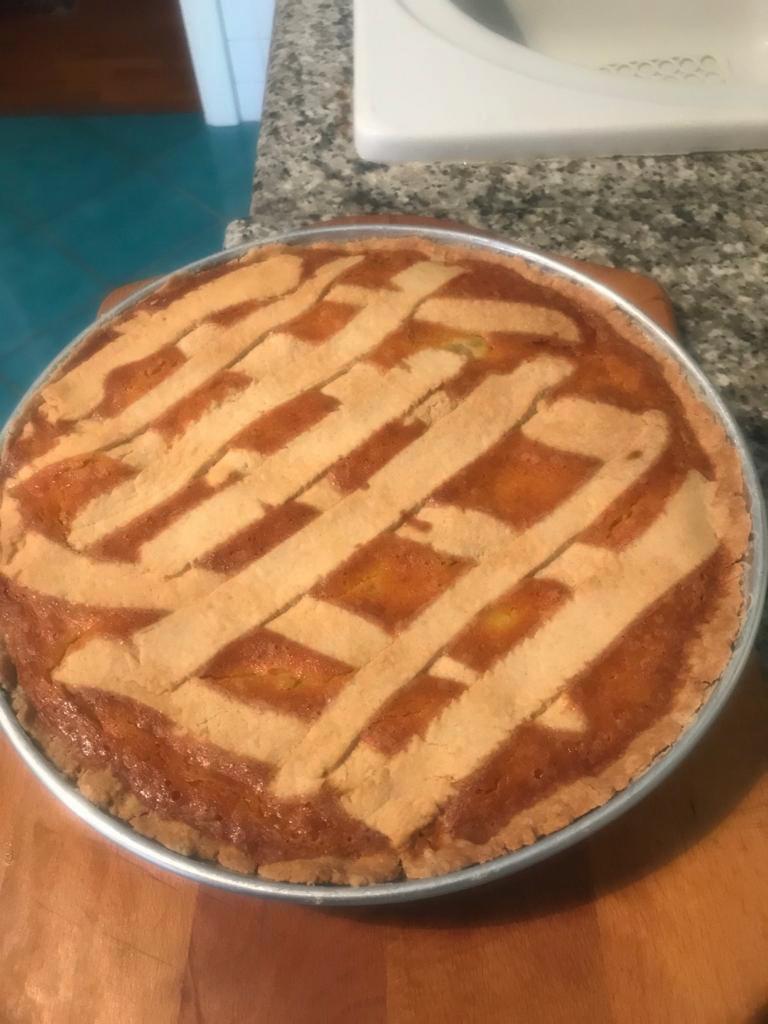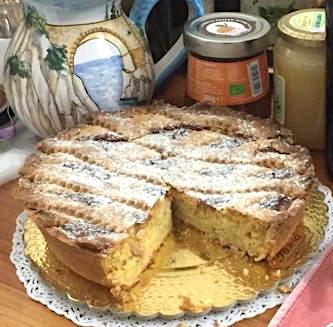Waiting — or not — for Easter in Coronavirus Italy

I am not a Catholic, but in the past my own Roman Easter eve tradition has been to attend the mass at Sant’Anselmo, on the Aventino Hill, which is sung in Gregorian Chant. I usually arrive just a minute before 10:30 PM, because I am busy greedily eating Easter colomba (an almond studded, dove shaped Easter cake) and have to gallop to make it in time to the courtyard of the church. Because it is there that transpires the part of the Easter Eve mass that I like most.
In the courtyard is a smoldering bonfire that sends welcome warmth into the springtime Roman night air. The parishioners gather around it. Everyone awaits the moment when the white robed Sant’Anselmo priest takes a huge cream colored Pascal candle, about half his height, and etches on it with a little knife the symbols of the Alpha and the Omega, the first and last Greek letters letters, signifying that God is the beginning and end. He with some difficulty extends the candle into the bonfire, and its wick catches the flame. He turns then to the person closest to him, and passes the flame — because everyone holds a small, crooked candle wearing a fancy pastel colored ruff around its base. As the flame goes from one of us to the next, the bonfire itself continues to smolder on, oblivious of human activity that circles around it. In a quiet, slow stream, parishioners parade into the darkened church, holding before them their flickering candles. The sonorous peals of the Sant’Anselmo bell sound out the start of the Easter Eve mass.
I like to stay a bit longer, when everyone is gone, and contemplate the bonfire all on my own.
For me that bonfire, enjoyed just on my own, is the beginning of Easter.
This year there is no mass. There is no Paschal candle. Masses are being streamed from St. Peter’s, and Italians who might attend church in their own home towns will instead do so this year from their sofas.
What the coronavirus has not eradicated are the Roman Easter morning bells. Some are deep base (like St Peter’s) and some are a bit off key; some are resonant, and seem to stay in the air well after the last peal, like a vapor trail. Some are tinny. Some (like San Benedetto in Piscinula in Trastevere, with the oldest bell tower in Rome) are run by hand. As there is close to no traffic in Rome, all of the voices’ bells will be heard, and heard well, this both within and without the city’s Aurelian walls.

Tomorrow I will be as busy as the bells because my Easter morning activity this year, as in all the years since I was a teenager, is to make an artichoke tart for Easter lunch, and that takes ample time, as there are herbs to be minced (thyme and mint), artichokes to trim, a pasty crust to make, and various other culinary stages that are especially pleasant if accompanied with a glass of white wine.

My friend Maria Grazia from downstairs has been baking in Rome, and has made a traditional Easter pastiera that is no less glorious than that in the best (shuttered) pastry store in Rome.

She will share it with her husband and son. In Furore (Amalfi) Giocondo’s neighbor has left on his steps a pastiera made just for him. He says :”I see absolutely no reason to wait till Easter and am going to try it immediately.”

Waiting — or not — for Easter, in an unfamiliar, locked down Italy.
’

Meet Marjorie
Insider’s Italy is an experienced family business that draws on my family’s four generations of life in Italy. I personally plan your travels. It is my great joy to share with you my family’s hundred-year-plus archive of Italian delights, discoveries and special friends.
